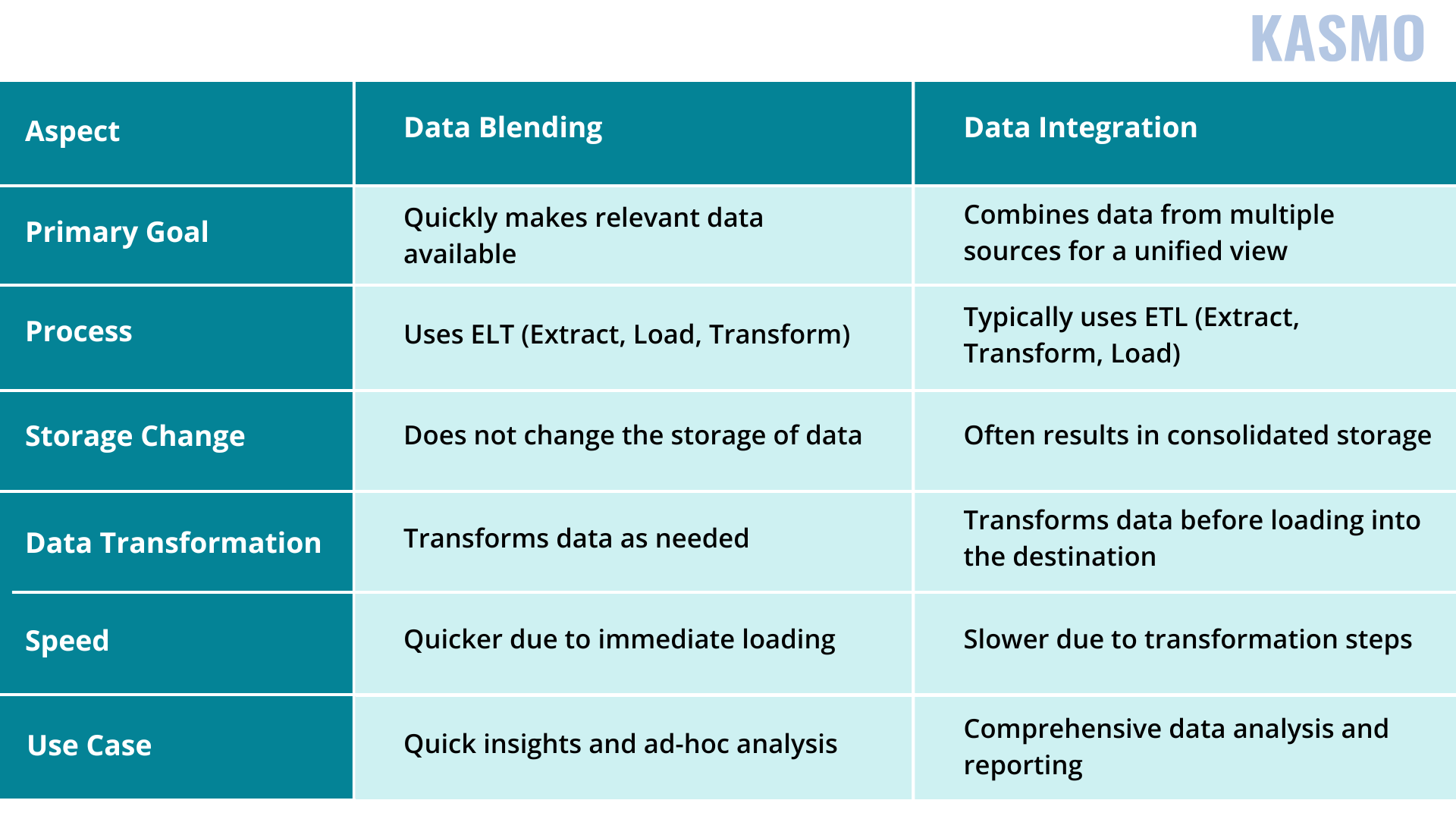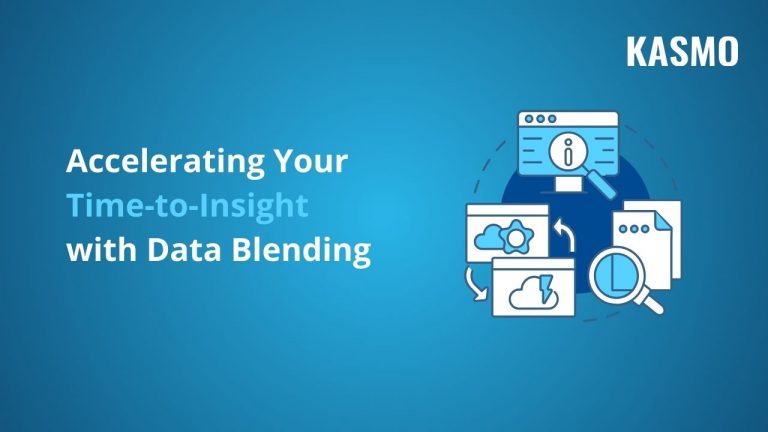What is Data Blending?
Data blending is a process where data from different sources are combined to become a single data set that will then be used for visualization and analysis. It is used for ad hoc reporting or is used for a quick analysis to provide a solution for a specific business query. The combined data helps decision makers with a more complete and deeper understanding of the underlying factors which impact business problems and processes.
Importance of Data Blending
In the process of data blending, data from different sources are combined which facilitates business owners to get a comprehensive analysis. Often, by blending two or more datasets valuable information can be retrieved, which results in more informed decision-making about business operations.
Tools like VLOOKUPS, scripts, and multiple spreadsheets have been used to make datasets which are difficult to maintain and time consuming. When the number of uncovered ad-hoc requests grow, manual methods to create analytical datasets are no longer productive or scalable.
It helps businesses build datasets faster, so analysts and business leaders can build accurate insights faster. Businesses who want to thrive in this competitive market need to focus on solving complex challenges of business rather than waste time on figuring out lengthy spreadsheets or manual SQL queries. Using the process of blending data, gives plenty of opportunities to data analysts to build more skills, which can enhance their role in their organization. With growing business, expansion of data will gradually take place, allowing business owners to work with the new data along with historical data.
Difference between Data Blending vs. Data Integration

Process of Data Blending
There are different techniques of data blending that involve its unique series of steps. But no matter which technique businesses use, there are some basic steps that are followed in almost every technique. These steps are:
Preparation
Businesses need to determine the data that will be required in the data blending process. Business leaders should choose this data carefully, as it will be required to satisfy the business needs. This data can be of different formats or file types. Data blending tools consolidate multiple data types into a unified format; however, each data set must share a common dimension. (Common dimensions mean the standard dimensions that are shared among various data models, such as information on customers, products, employees, etc.)
Blending
In the data blending process, the integrated data must be customized based on the shared dimension. Although it can accommodate many data sources into a single blended view, adding from data sources that don’t necessarily answer the business problems can create challenges.
Validation
If businesses are using data of different formats, it can create challenges during the data blending process. After the data is cleansed and structured, businesses need to ensure that the newly blended data set is presented correctly for analysis. Before moving to the next step, the consistency and the accuracy of the data needs to be checked.
Output
After the blending of data is complete, the blended data is loaded into a data warehouse. Businesses can use data analysis tools to access new and integrated data. Without it, analyzing data from various sources will not generate accurate results.
Benefits of Data Blending
Data blending is an invaluable tool for organizations, enabling them to swiftly transform data into actionable insights that can enhance profitability and streamline business processes. Here are five key benefits:
Swift Analysis of Time-Sensitive Data
It offers a quicker, more agile approach to analyzing data, facilitating prompt access to key insights. By simplifying the process, it reduces reliance on data analysts and IT teams, minimizing bottlenecks and enabling organizations to seize more important business opportunities.
Integration of Data from Multiple Systems
As new data sources continue to emerge, data silos pose a growing challenge. Data blending addresses this issue by unifying relevant information from diverse systems, allowing for a comprehensive view of specific business challenges or processes.
Enhanced Insights Through Data Combination
A single data set often lacks the complete context needed for effective analysis. By merging related data from multiple sources, organizations can develop a fuller understanding of underlying issues and identify opportunities for process improvement.
Accessibility for Non-Technical Users
Data teams frequently face overwhelming requests from various business intelligence initiatives, creating bottlenecks that hinder innovation. Data blending simplifies data access, empowering decision-makers without a technical background to derive insights necessary for solving problems and fostering creative solutions.
Better Decision-Making
In today’s complex and rapidly changing business environment, relying on guesswork is insufficient. Data-driven decision-making, supported by accessible data analytics, enables organizations to quickly address challenges and capitalize on emerging opportunities.
Why Choose Snowflake for Data Blending and Integration?
The Snowflake Data Cloud enables seamless data sharing across your entire business ecosystem and streamlines data analytics processes, including data blending, for quick access to information from multiple sources. With Snowflake, you can foster collaborative data efforts while reducing costs and uncovering valuable business insights.
Businesses can leverage Snowflake Data Collaboration as it can eliminate ETL, FTP and Electronic Data Interchange (EDI) cycles. By replacing traditional data sharing methods with Snowflake, businesses can eliminate the need to move or copy data elsewhere and easily access comprehensive data from across the organization.


